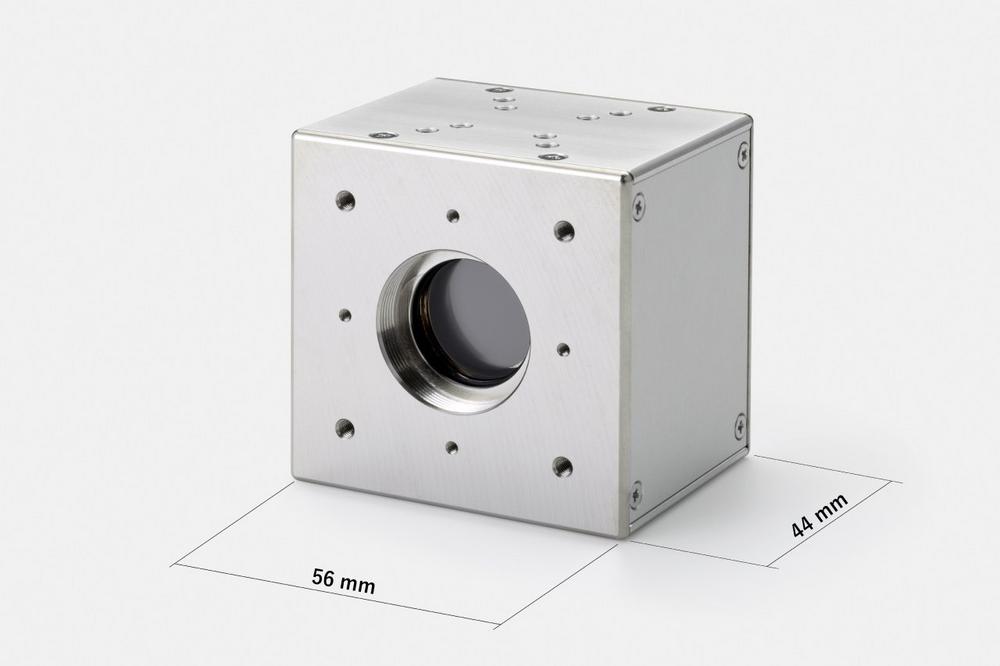This THz-I.I. will be unveiled at "The 69th JSAP (Japan Society of Applied Physics)
Spring Meeting" held at the Sagamihara Campus of Aoyama Gakuin University (in Sagamihara City, Kanagawa Prefecture, Japan) for 5 days from Tuesday, March 22 to Saturday, March 26.
*Terahertz waves are electromagnetic waves near a frequency of 1 THz and have the properties of both light and radio waves.
Overview of THz-I.I.
An image intensifier is an image enhancement tube primarily developed for night vision under starlight. A typical image intensifier consists of a photocathode to convert the incoming light into electrons, a microchannel plate (MCP) to amplify the electrons, and a phosphor screen to return the electrons to light, all sealed in a vacuum tube. By selecting the photocathode material, the incoming light including visible and invisible light can be converted into electrons, which are then multiplied in a vacuum. This process enables highspeed, high-resolution and high-sensitivity imaging of luminescent phenomena.
Hamamatsu Photonics develops, manufactures and sells I.I. optimized for observing fastchanging phenomena and electric discharge phenomena that emit very-low invisible light.
At Hamamatsu Photonics we have been doing collaborative research with the Technical University of Denmark to develop photoelectric conversion technology utilizing small antenna elements (metamaterial antennas) that convert terahertz waves into electrons.
We applied this photoelectric conversion technology to our imaging technology to form a metamaterial antenna on the inner surface of the I.I. input window. We also redesigned the antenna structure to increase the efficiency of converting terahertz waves into electrons, which are effectively multiplied in the vacuum. By doing it in this way, we succeeded for the first time in the world in developing a fast-response, high-resolution THz-I.I. capable of realtime imaging of terahertz waves transmitted through or reflected from target objects. This THz-I.I. also allows imaging of terahertz waves in any frequency band by changing the antenna design to match the required application.
This THz-I.I. will expand the applications of non-destructive inspection. For example, finding fast in-line inspection of nails and thin films in food products that are normally difficult to detect using ordinary X-ray inspection techniques. Since terahertz waves are harmless to the human body, the THz-I.I. is also promising for body scanners that capture real-time images of terahertz waves reflected from the target object. This will prove highly effective when making walk-through security checks at train ticket gates and entrances to event venues. In research applications, the THz-I.I. will serve as a tool to acquire the beam profile of terahertz waves or to adjust the terahertz optical system.
As a future goal, we will be pushing ahead with developing a THz-I.I. with higher sensitivity for actual use and aim to start shipping product samples within one year.
Main features of THz-I.I.
1. World’s first THz-I.I. capable of real-time non-destructive imaging by:
-Increasing the efficiency of converting terahertz waves into electrons
-Redesigning the antenna structure to generate electrons more efficiently
2. Sensitive frequency band is selectable to match the application by:
-Changing the metamaterial antenna design, the I.I. is capable of imaging terahertz waves in any frequency band over a wide range from 0.01 to 50 terahertz (THz, T is a trillion).
Background of development
Terahertz waves have the property of light’s directionality and radio waves‘ permeability.
This means we can expect wide-ranging applications in the imaging field including nondestructive inspection.
In terahertz imaging, bolometers are thermal detectors whose electrical resistance varies with the temperature change caused by the absorption of the incident terahertz waves.
However, using a bolometer for real-time imaging is difficult due to its limited operating speed. Applications requiring higher operating speed include airport security checks and entrance gates at events. These places need a body scanner using a walk-through method which does not require people to stop. To meet this need, Hamamatsu Photonics, developed a fast-response, high-resolution THz-I.I. capable of terahertz imaging in realtime.
Hamamatsu Photonics Deutschland GmbH
Arzberger Str. 10
82211 Herrsching am Ammersee
Telefon: +49 (8152) 375-0
Telefax: +49 (8152) 375-199
http://www.hamamatsu.com
Public Relations
Telefon: +49 (8152) 375-185
Fax: +49 (8152) 375-199
E-Mail: rfritsch@hamamatsu.de
![]()
